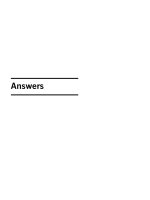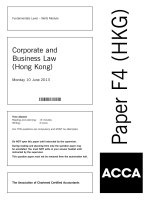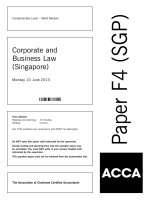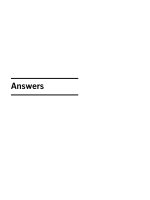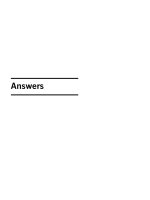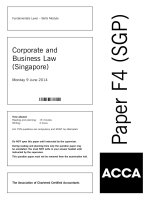BPP ACCA f4 corporate and business law 2017
Bạn đang xem bản rút gọn của tài liệu. Xem và tải ngay bản đầy đủ của tài liệu tại đây (5.91 MB, 434 trang )
ACCA APPROVED
Paper F4
Corporate and Business Law (English)
This ACCA Study Text for Paper F4 Corporate and
Business Law (English) has been comprehensively
reviewed by the ACCA examining team. This review
guarantees appropriate depth and breadth of content
and comprehensive syllabus coverage.
February 2016
£32.00
For exams from 1 September 2016 to 31 August 2017
BPP House
142-144 Uxbridge Road
London W12 8AA
United Kingdom
T 0845 075 1100 (UK)
T +44 (0)20 8740 2211 (Overseas)
E
bpp.com/learningmedia
• A user-friendly format for easy navigation
• Exam focus points describing what the examining
team will want you to do
• Regular Fast Forward summaries emphasising the
key points in each chapter
• Questions and quick quizzes to test your
understanding
• A practice question bank containing exam-
standard questions with answers
• A full index
• All you need in one book
Study Text
Contact us
In addition to ACCA examining team reviewed
material you get:
Corporate and Business Law (English)
BPP Learning Media is dedicated to supporting aspiring business professionals
with top-quality learning material as they study for demanding professional
exams, often whilst working full time. BPP Learning Media’s commitment
to student success is shown by our record of quality, innovation and market
leadership in paper-based and e-learning materials. BPP Learning Media’s study
materials are written by professionally qualified specialists who know from
personal experience the importance of top-quality materials for exam success.
ACCA F4
ACCA approved content provider
A-PDF Text
Replace
DEMO: Purchase from www.A-PDF.com to remove the watermark
CONTENT
PROVIDER
ACCA Approved
Study Text
Paper F4
Corporate and Business Law
(English)
Free access
to our Exam
Success site
Look inside
For exams from 1 September 2016
to 31 August 2017
/>
ACF4(ENG)ST16 (RICOH).indd 1-3
04/02/2016 12:58
ACCA APPROVED CONTENT PROVIDER
As the first accredited publisher of ACCA materials, BPP Learning Media has set the benchmark for
producing exceptional study materials for students and tutors alike.
Our Study Texts, Practice & Revision Kits and i-Passes (for exams on demand) are reviewed by the ACCA
examining team and are written by our in-house authors with industry and teaching experience who
understand what is required for exam success.
EXAM SUCCESS SITE
To help maximise your chances of succeeding in your exams, we’ve put together a suite of exclusive ACCA
resources. Our Exam Success site provides you with access to a free digital version of this publication, as
well as extra resources designed to focus your efforts on exams and study methods.
To access the Exam Success site, please email with the subject line “Access to Exam
Success site - eBook”, including your order reference number and the name of the book you’ve bought (ie
ACCA F5 Study Text) for your access code. Once you have received your code, please follow the instructions
below:
To access the BPP ACCA Exam Success site for this material
please go to:
www.bpp.com/ExamSuccessSite
n Create a user account if you don’t already have one.
Make sure you reply to the confirmation email.
n Log in using your registered username and password.
Select the paper you wish to access.
n Enter the code you received when prompted. You will only
have to do this once for each paper you are studying.
/>
S
T
U
D
Y
PAPER F4
Corporate and Business Law
(English)
BPP Learning Media is an ACCA Approved Content Provider. This means we work
closely with ACCA to ensure this Study Text contains the information you need to pass
your exam.
In this Study Text, which has been reviewed by the ACCA examination team, we:
Highlight the most important elements in the syllabus and the key skills you need
Signpost how each chapter links to the syllabus and the study guide
Provide lots of exam focus points demonstrating what is expected of you in the exam
Emphasise key points in regular fast forward summaries
Test your knowledge in quick quizzes
Examine your understanding in our practice question bank
Reference all the important topics in our full index
BPP's Practice & Revision Kit also supports this paper.
FOR EXAMS FROM 1 SEPTEMBER 2016
TO 31 AUGUST 2017
/>
T
E
X
T
First edition 2007
Ninth edition February 2016
A note about copyright
ISBN 9781 4727 4420 3
(Previous ISBN 9781 4727 2673 5)
Dear Customer
What does the little © mean and why does it matter?
e-ISBN 9781 4727 4662 7
Your market-leading BPP books, course materials and e-learning
materials do not write and update themselves. People write them on
their own behalf or as employees of an organisation that invests in
this activity. Copyright law protects their livelihoods. It does so by
creating rights over the use of the content.
British Library Cataloguing-in-Publication Data
A catalogue record for this book
is available from the British Library
Breach of copyright is a form of theft – as well as being a criminal
offence in some jurisdictions, it is potentially a serious breach of
professional ethics.
Published by
BPP Learning Media Ltd
BPP House, Aldine Place
London W12 8AA
With current technology, things might seem a bit hazy but, basically,
without the express permission of BPP Learning Media:
www.bpp.com/learningmedia
Photocopying our materials is a breach of copyright
Scanning, ripcasting or conversion of our digital materials
into different file formats, uploading them to facebook or emailing them to your friends is a breach of copyright
Printed in the United Kingdom by
Ricoh UK Ltd
Unit 2
Wells Place
Merstham
RH1 3LG
You can, of course, sell your books, in the form in which you have
bought them – once you have finished with them. (Is this fair to your
fellow students? We update for a reason.) Please note the e-products
are sold on a single user licence basis: we do not supply 'unlock'
codes to people who have bought them secondhand.
Your learning materials, published by BPP Learning Media Ltd,
are printed on paper obtained from traceable sustainable
sources.
And what about outside the UK? BPP Learning Media strives to make
our materials available at prices students can afford by local printing
arrangements, pricing policies and partnerships which are clearly
listed on our website. A tiny minority ignore this and indulge in
criminal activity by illegally photocopying our material or supporting
organisations that do. If they act illegally and unethically in one area,
can you really trust them?
All rights reserved. No part of this publication may be reproduced,
stored in a retrieval system or transmitted, in any form or by any
means, electronic, mechanical, photocopying, recording or
otherwise, without the prior written permission of BPP Learning
Media Ltd.
We are grateful to the Association of Chartered Certified
Accountants for permission to reproduce past examination
questions. The suggested solutions in the practice answer bank
have been prepared by BPP Learning Media Ltd, unless otherwise
stated.
©
BPP Learning Media Ltd
2016
ii
/>
Contents
Page
Introduction
Helping you to pass
Studying F4
The exam paper
Syllabus and Study Guide
v
vii
ix
x
Part A Essential elements of the legal system
1
2
Law and the legal system
Sources of law
3
17
Part B The law of obligations
3
4
5
6
7
Formation of contract I
Formation of contract II
Content of contracts
Breach of contract and remedies
The law of torts and professional negligence
37
55
73
89
105
Part C Employment law
8
9
Contract of employment
Dismissal and redundancy
125
143
Part D The formation and constitution of business organisations
10
11
12
13
14
Agency law
Partnerships
Corporations and legal personality
Company formation
Constitution of a company
161
171
181
199
215
Part E Capital and the financing of companies
15
16
17
Share capital
Loan capital
Capital maintenance and dividend law
233
249
263
Part F Management, administration and the regulation of
companies
18
19
20
Company directors
Other company officers
Company meetings and resolutions
275
301
311
Part G Insolvency law
21
Insolvency and administration
329
Part H Corporate fraudulent and criminal behaviour
22
Fraudulent and criminal behaviour
Practice question bank
Practice answer bank
List of cases and index
Review form
349
367
377
387
Contents
/>
iii
iv
/>
Helping you to pass
BPP Learning Media – ACCA Approved Content Provider
As ACCA's Approved Content Provider, BPP Learning Media gives you the opportunity to use study
materials reviewed by the ACCA examination team. By incorporating the examination team's comments
and suggestions regarding the depth and breadth of syllabus coverage, the BPP Learning Media Study
Text provides excellent, ACCA-approved support for your studies.
The PER alert
Before you can qualify as an ACCA member, you not only have to pass all your exams but also fulfil a three
year practical experience requirement (PER). To help you to recognise areas of the syllabus that you
might be able to apply in the workplace to achieve different performance objectives, we have introduced
the 'PER alert' feature. You will find this feature throughout the Study Text to remind you that what you
are learning to pass your ACCA exams is equally useful to the fulfilment of the PER requirement.
Your achievement of the PER should now be recorded in your on-line My Experience record.
Tackling studying
Studying can be a daunting prospect, particularly when you have lots of other commitments. The different
features of the Study Text, the purposes of which are explained fully on the Chapter features page, will
help you whilst studying and improve your chances of exam success.
Developing exam awareness
Our Study Texts are completely focused on helping you pass your exam.
Our advice on Studying F4 outlines the content of the paper, the necessary skills you are expected to be
able to demonstrate and any brought forward knowledge you are expected to have.
Exam focus points are included within the chapters to highlight when and how specific topics were
examined, or how they might be examined in the future.
Using the syllabus and study guide
You can find the syllabus and study guide on pages x–xvii of this Study Text.
Testing what you can do
Testing yourself helps you develop the skills you need to pass the exam and also confirms that you can
recall what you have learnt.
We include Questions – lots of them – both within chapters and in the Practice Question Bank, as well as
Quick Quizzes at the end of each chapter to test your knowledge of the chapter content.
Introduction
/>
v
Chapter features
Each chapter contains a number of helpful features to guide you through each topic.
Topic list
Topic list
Syllabus reference
What you will be studying in this chapter and the relevant
section numbers, together with ACCA syllabus references.
Introduction
Puts the chapter content in the context of the syllabus as
a whole.
Study Guide
Links the chapter content with ACCA guidance.
Exam Guide
Highlights how examinable the chapter content is likely to
be and the ways in which it could be examined.
Knowledge brought forward from earlier studies
What you are assumed to know from previous
studies/exams.
FAST FORWARD
Summarises the content of main chapter headings,
allowing you to preview and review each section easily.
Examples
Demonstrate how to apply key knowledge and
techniques.
Key terms
Definitions of important concepts that can often earn you
easy marks in exams.
Exam focus points
When and how specific topics were examined, or how
they may be examined in the future.
Formula to learn
Formulae that are not given in the exam but which have to
be learnt.
Gives you a useful indication of syllabus areas that
closely relate to performance objectives in your Practical
Experience Requirement (PER).
vi
Question
Gives you essential practice of techniques covered in the
chapter.
Case Study
Real world examples of theories and techniques.
Chapter Roundup
A full list of the Fast Forwards included in the chapter,
providing an easy source of review.
Quick Quiz
A quick test of your knowledge of the main topics in the
chapter.
Practice Question Bank
Found at the back of the Study Text with more
comprehensive chapter questions. Cross referenced for
easy navigation.
Introduction
/>
Studying F4
This paper examines a basic understanding of legal principles and their application. You may find the
material a little different from what you are used to because there are virtually no numbers involved. All
students should attempt as many exam standard questions as they can, and those taking a paper based
exam should develop a concise style of writing in order to get points across quickly and clearly.
1 What F4 is about
The main aims of the F4 exam are:
To develop knowledge and skills in the understanding of the general legal framework and of
specific legal areas relating to business, but
To recognise the need to seek further specialist legal advice where necessary
The exam is not designed to turn you into a legal expert. Instead you will be a well-informed professional
accountant who appreciates the legal issues of doing business but who recognises the boundaries of their
legal knowledge and therefore the point at which professional legal expertise must be sought. The
sequence of the syllabus and study guide takes you through the main areas of what you need to know.
Essential elements of the legal system
In this part of the syllabus you are covering areas that underlie all the other areas, namely: what is law and
how the UK legal system creates and administers it. The distinctions between criminal law and civil law,
between common law and civil law and between public law and private law, are very important. Most of
the paper is concerned with civil law, namely the law that sets out the rights and duties of persons in
relation to each other. There are elements of criminal law in relation to companies, insolvency, insider
dealing and money laundering, in addition to the topical area of human rights legislation.
Law of obligations
The syllabus clearly distinguishes two important types of obligation that individuals and businesses have.
Contract
When individuals or businesses make agreements, a legally binding contract may be formed. This paper
focuses on the requirements that must be met for a contract to be binding on the parties, what valid
contracts must contain, under which circumstances the contractual terms are breached and what
remedies are available for the affected party.
Tort
All members of society have a duty not to harm others and this principle forms the basis of tort. The tort
of negligence is highly topical and has an impact on individuals, businesses and professionals (such as
accountants). It is important for you to understand how such a duty is formed, the circumstances that will
cause a breach of that duty and if there are any defences to a breach that the perpetrator can call on.
Employment law
Employees and employers are bound to each other by an employment contact. It is important that you
have a good understanding of the contents of such a contract. Both employers and their employees owe
duties to each other and breach of these duties can result in legal action being taken.
Termination of employment can be fraught with danger for employers if it is not handled correctly. The
terms of 'wrongful' and 'unfair' dismissal are used commonly in the media, but the causes and remedies
are distinct and it is important for you to understand the difference.
Introduction
/>
vii
Formation and constitution of business organisations
The syllabus is very concerned with the various legal forms through which business transactions may be
conducted. It is important to distinguish initially between natural persons (human beings) and legal
persons (including natural persons, but extending to some forms of partnership and, most significantly,
companies). The law of agency underlies a substantial part of our study of business forms, since partners
and directors can and sometimes do act as agents.
Capital and the financing of companies
Most trading companies are financed by a mix of share capital (provided by their owners) and loan capital
(provided by third party lenders). Share capital may take a variety of forms, with each class of share
having different rights within the company. However, the primary responsibility of the shareholder is to
contribute funds to the company in accordance with the terms of the company's constitution and the
shares which they own. The return of these funds to shareholders is restricted since they are seen as the
'creditors' buffer', that is the funds which are available to settle creditors' outstanding debts in preference
to amounts due to shareholders. Hence there are detailed laws on 'capital maintenance'. These extend to
how far companies may distribute accumulated retained earnings to their shareholders in the form of
dividends or buyback of shares.
Loan capital is usually provided by lenders only if they can be assured of its repayment to them. If lenders
supply funds in return for debentures in the company, they usually require security for their loan: the
debenture is secured by means of a registered charge on particular or general assets of the company,
which can (within limitations) be realised so that the loan is repaid.
Management, administration and regulation of companies
As an artificial legal person a company cannot manage itself. This is the role primarily of the company's
directors, who owe duties to the company to manage it for the benefit of the company and thereby for the
benefit of its owners, the shareholders. There are a great many legal rules which regulate the appointment,
remuneration, disqualification, powers and duties of directors. These have grown up largely because of
problems that frequently occur. Most of these can be said to arise from conflicts between directors'
personal interests and their duties to act in the company's interest. Directors are termed officers of the
company along with the company secretary. Many companies also have to have an auditor.
Directors come into immediate contact with shareholders via company meetings, and the resolutions that
are passed at these meetings. There are, therefore, a plethora of legal rules on meetings and resolutions,
designed to ensure that the company is taking decisions properly and in accordance with the legitimate
interests of shareholders as a body.
Insolvency law
Not everything goes according to plan and frequently companies will encounter financial or other
difficulties, or will even reach crisis point and find themselves insolvent. At this point all parties –
shareholders, directors, lenders, customers, suppliers and employees – are in danger of losing out. There
are procedures designed to protect struggling companies to give them a 'breathing space' while they
resolve their issues. There are also rules for how a company which cannot be saved should be 'wound up',
depending on whether or not the company has any funds left.
Corporate fraudulent and criminal behaviour
Finally the syllabus covers the situations where activities of directors and others have strayed into criminal
behaviour. This often arises in the context of companies running out of money, but the law is also
concerned with company insiders with superior knowledge benefiting from insider dealing, and crime in
the form of money laundering.
viii
Introduction
/>
2 What skills are required?
To pass the F4 exam you will need to bring different professional attributes to bear.
First you need technical knowledge. There is a huge amount of technical content in the syllabus: case law,
conventions, codes of practice and legislation. You need to learn this and be able to identify which parts of
the knowledge you have are being called for in a particular question.
Second, you need to be able to apply knowledge to the scenarios that are presented in the last five
questions on the paper. You are aiming to solve practical problems here.
3 How to improve your chances of passing
There is no choice in this paper, all questions have to be answered. You must, therefore, study the
entire syllabus, there are no short-cuts
The first section of the exam consists of 45 Multiple Choice Questions (MCQs) worth either one or
two marks each. The total marks on offer in this section is 70. These will inevitably cover a wide
range of the syllabus
The second section of the exam consists of 5 Multiple Task Questions (MTQs) worth 6 marks
each. Each MTQ will be broken down into sub-questions. The total marks on offer in this section is
30. Each MTQ question will be based on a scenario and will require some application of your
knowledge
Practising questions under timed conditions is essential. BPP's Practice & Revision Kit contains
questions on all areas of the syllabus
Keep an eye out for articles as the examination team will use Student Accountant to communicate
with students
Read journals etc to pick up on ways in which real organisations apply the law and think about
your own organisation if that is relevant
4 Brought forward knowledge
There is no brought forward knowledge for the F4 exam.
5 The exam paper
Format of the paper
The exam lasts two hours and is divided into two sections.
Section A consists of 45 MCQs, a mixture of one or two marks each. One mark MCQs will require you to
choose one correct option from three, and two mark MCQs will require you to choose one correct option
from four.
Section B consists of 5 MTQs containing a total of 6 marks each.
All questions are compulsory.
The exam will cover as much of the syllabus as possible.
Introduction
/>
ix
Syllabus and Study Guide
The F4 syllabus and study guide can be found below.
x
Introduction
/>
Introduction
/>
xi
xii
Introduction
/>
Introduction
/>
xiii
xiv
Introduction
/>
Introduction
/>
xv
xvi
Introduction
/>
Introduction
/>
xvii
xviii
Introduction
/>
P
A
R
T
A
Essential elements
of the legal system
1
/>
2
/>
Law and the
legal system
Topic list
Syllabus reference
1 What is law?
A1(a)
2 Types of law
A1(a)
3 The system of courts
A1(b)
Introduction
Welcome to your study of corporate and business law. In this chapter we set
the scene and framework of the English legal system.
We start by defining what law is and why it is important to society. Our study
continues by considering the different types of law that we have in the UK and
how they have developed over time.
The chapter concludes with an analysis of the criminal and civil court
systems.
3
/>
Study guide
Intellectual level
A
Essential elements of the legal system
1
Law and the legal system
(a)
Define law and distinguish types of law
1
(b)
Explain the structure and operation of the courts
1
Exam guide
The nature of law and the operation of the legal system form a basis for your later studies but will also be
examined as a topic all by itself.
1 What is law?
FAST FORWARD
'Law is a formal mechanism of social control', Business Law 5th Edition, David Kelly, Ann Holmes and
Ruth Hayward
Human society has developed over thousands of years from a primitive culture where the very survival of
the species was at stake to the complex, diverse and dominating species that humans are today.
Much of the success of this development can be attributable to rules and regulations laid down by
society. With a little further study the need for such rules becomes clear. In the early days of human
existence, survival was achieved by working as a group. There was a fine line between life and death, for
example the stealing of food from another group member could eventually result in starvation or death of
the victim.
Social order, created by rules, is at the foundation of the society that we see today. The framework that
was created influences how individuals interact and how businesses operate. In other words, it provides
social control.
The framework of social control can be viewed as having two aspects:
Formal control mechanisms
Informal control mechanisms
Law is a formal control mechanism. It provides a structure for dealing with and resolving disputes that
may arise, as well as providing some deterrent to those wishing to disrupt social order.
Informal mechanisms include ethical and moral guidance. These are 'norms' or behavioural expectations
that society has developed over time through its culture. Such mechanisms have little formal structure to
organise, control or to punish – such matters are dealt with informally by pressure from other individuals
or groups.
PO1 requires you to ‘act diligently and honestly, following codes of conduct, giving due regard to, and
keeping up to date with, relevant legislation’.
The contents of this Study Text should help you identify legal and regulatory compliance requirements to
help achieve this.
2 Types of law
The English legal system distinguishes several different types of law.
4
Common law and equity
Statute law
1: Law and the legal system Part A Essential elements of the legal system
/>
Private law and public law
Criminal law and civil law
2.1 Common law and equity
The earliest element of the English legal system is common law, a system of rigid rules laid down by royal
courts following the Norman conquest. Application of law was by judges who travelled around the country
to keep the King's peace and judgements often resulted in harsh consequences.
The judges actually made the law by amalgamating local customary laws into one 'law of the land'.
Remedies under common law are monetary, and are known as damages.
However, there are times when money is not a suitable remedy. For example, you have agreed to buy a
unique painting from an art dealer. Should the dealer at the last minute sell the painting to someone else,
damages are unlikely to be acceptable, after all you wanted that painting.
Equity was developed two or three hundred years after common law as a system to resolve disputes
where damages are not a suitable remedy and to introduce fairness into the legal system.
2.2 Statute law
Whilst the judiciary is responsible for the creation of common law, Parliament is responsible for statute
law. Statute law is usually made in areas so complicated or unique that suitable common law alternatives
are unlikely, or would take an unacceptable length of time, to develop – company law is one example of
this.
2.3 Private law and public law
Most of the law that you will be studying is private law. That is law which deals with relationships and
interactions between businesses, and private individuals, groups or organisations.
The state provides a framework for dealing with disputes and for enforcing decisions, but it is for
individuals to handle matters between themselves. For example, the Sale of Goods Act 1979 regulates the
sale of goods. It provides rules that must be adhered to when making a sale. Should any dispute arise that
is covered by the Act, it is up to the parties to resolve the matter themselves using rules laid down by the
legislation, the state does not get involved.
Public law is mainly concerned with government and the operation and functions of public organisations
such as councils and local authorities. It will not be of great interest to you in your studies of corporate
law, however examples of public law can be found in planning rules that must be adhered to when
building or expanding offices.
A key distinction between public and private law is who takes up the case when a wrong is committed.
The state prosecutes the alleged perpetrator under public law, whereas, under private law it is for the
individual concerned to take action.
Criminal law is a part of public law and deals with behaviour that the state considers unwelcome and
wishes to prevent. Criminal law also decides how those guilty of committing unlawful behaviour should be
punished. You will notice the names of criminal cases are reported as R v Jones or Regina v Jones. This
indicates that the state takes action on behalf of the crown (Regina is Latin for Queen).
2.4 Criminal and civil law
FAST FORWARD
The distinction between criminal liability and civil liability is central to the English legal system.
It is often the criminal law about which the general public has a clearer perception and keener interest.
Some of the high profile criminal cases at London's Old Bailey are deemed extremely newsworthy. Civil
law, on the other hand, receives less overt media coverage. However, every time you buy or sell goods, or
Part A Essential elements of the legal system 1: Law and the legal system
/>
5


